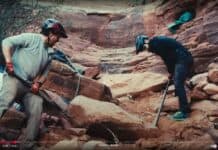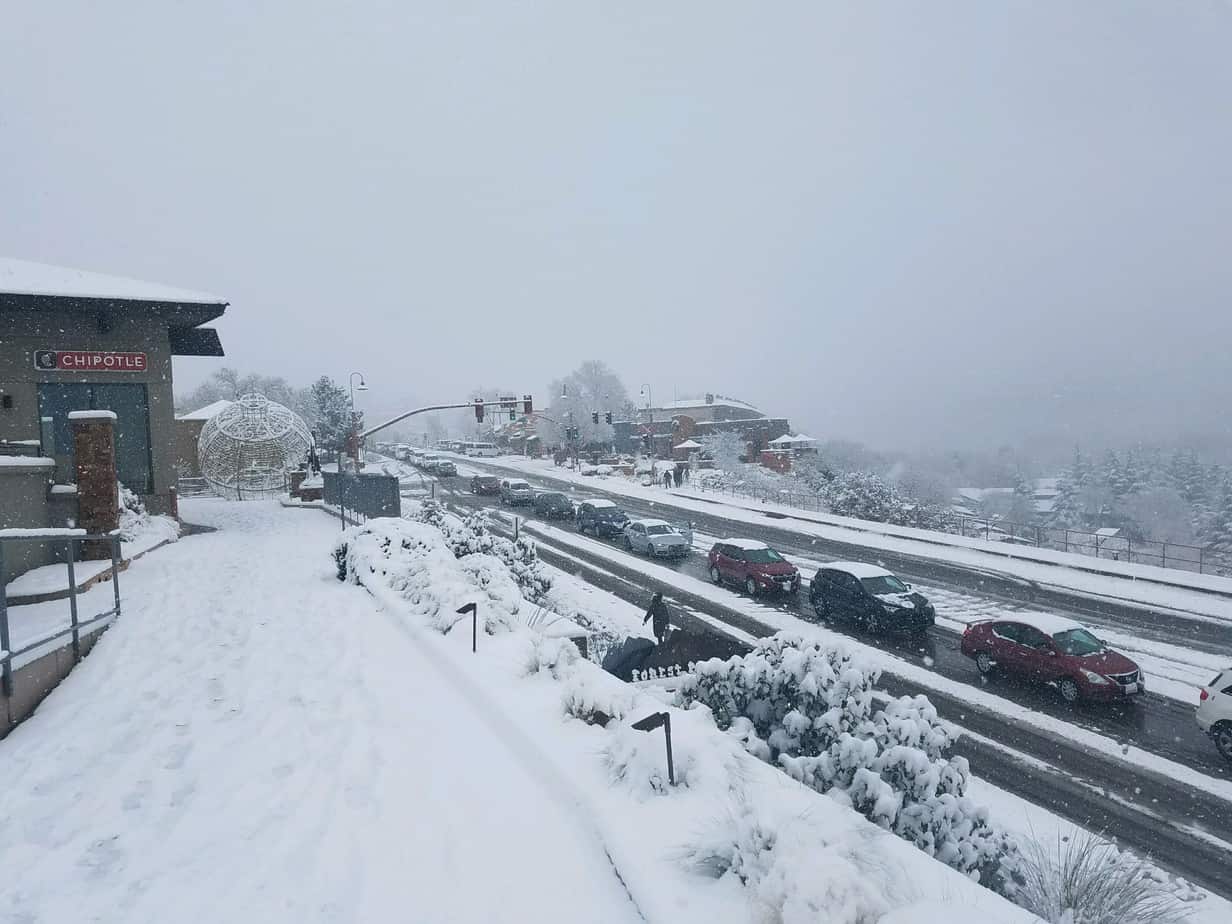For many Sedona residents, it wasn’t the way they had hoped to ring in the new year.
On New Year’s Eve traffic in many areas of the city came to a halt with some residents reporting that it took more than two hours to get from Uptown to the Village of Oak Creek.
Even though the National Weather Service said Sedona received 1.95 inches of snow, more was reported by others. Regardless, the result was the same, leaving many to ask — why?
City Engineer Andy Dickey said prior to the storm, the city had their two makeshift plows ready. In the offseason those vehicles are converted back to small dump trucks but in winter blades are attached to the front of the vehicle. In addition to the trucks being ready, so was the Public Works Department staff, with new employees receiving additional training if needed.
“The day of the storm, we were out running our trucks through town and putting down cinders before the snow even started sticking,” Dickey said, adding that there is a spreader in the back of the truck that disperses the cinder onto the roadway.
“ADOT has always said their first priority are the interstates: I-17 and I-40. They were out taking care of that. We do have an intergovernmental agreement with ADOT that says the city is responsible for snow removal when they are not available.”
Dickey said ADOT provides the city with cinder at no cost aside from the city being responsible in hauling it to Sedona. Like ADOT, the city also has its list of priorities when determining what roads to plow with its modified trucks. Those include State Routes 89A and 179 followed by Uptown and the more problematic areas like Cooks Hill, Schuerman Mountain near Sedona Red Rock High School and Airport Road.
“We do focus on those areas but because we have just two trucks, we can’t be everywhere,” he said. “In some cases, we plowed an area and then it got even more snow to the point it didn’t even appear we had been there.”
At 12:40 p.m. — two hours after the snow had started falling — city staff reached out to ADOT informing the agency that assistance was needed. They also asked for help from Yavapai County, being that a portion of Airport Road is county-owned. In addition to the snow, there were several accidents reported in and around the city, which added to the problem and led to complete closures of all three ingresses/egresses at various times.
Law enforcement determines when a road is to be closed due to dangerous conditions. “We made that call to ADOT because it was understood that there was more need than what we could handle with our two trucks,” Dickey said.
“Their message was that they would get here as soon as they could break free.”
The issues the city faced that day had less to do with the snow and more to do with the temperatures, he said. “If you were driving around Cottonwood that day, it looked as though they received just as much snow,” he said.
“The difference was, the snow was turning to slush there but in Sedona under the snow was ice because of the lower temperature. And, our plows can’t break through that. Even with the cinder, that’s only going to add a little bit of traction when you’re dealing with ice.”
Around 3 p.m. ADOT crews arrived in Sedona to continue plowing the snow but by that time the flurries had stopped. In the 2½ weeks since that storm, Dickey said there has been discussion among city staff as to what can be done to prevent another citywide standstill from occurring.
Following the 2014 storm — that coincidentally also hit on New Year’s Eve — Dickey said he requested additional snow removal equipment during the 2015 budget session. He said at that time the city determined that the need for snow removal equipment was so infrequent that the cost could not be justified. He plans to request additional equipment in next fiscal year’s budget. “I’ve talked with our staff to determine what we can do differently,” Dickey said.
“We could outfit another one of our vehicles with a blade [which cost around $10,000] because two is just not enough. I don’t want to give the impression that we’re not able to do things better because there are things we can do.
“One of things I feel we can do a better job at is communicating with the public to let everyone know what’s going on.”
He added that a large plow used by ADOT can carry a price tag of around $250,000. In terms of ADOT providing assistance to Sedona during storms, Dickey said, “I understand where they’re at. To think that we can rely on them is not realistic. I don’t mean that in a negative way. They may have 200 plows but they’re often dealing with far worse conditions than we are.”





















